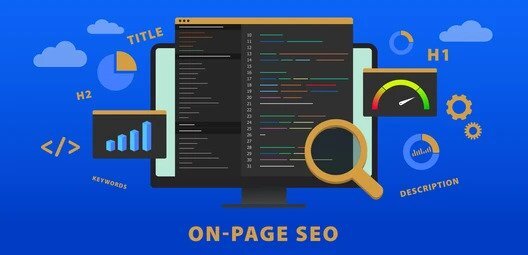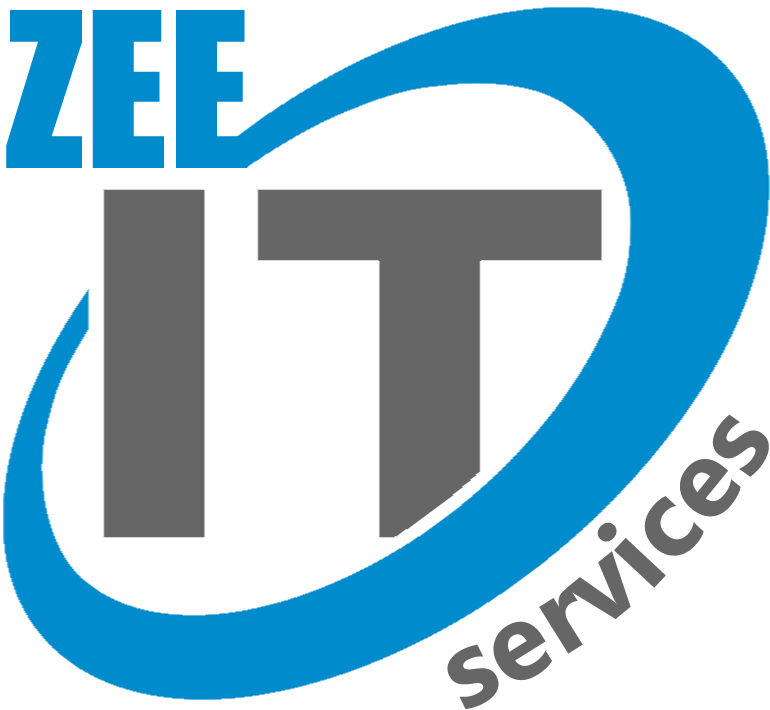
May 23, 2023 | Blogs
The term “Domain Authority” or “DA” is one that is frequently used in the context of search engine optimization (SEO). But what exactly is Domain Authority, and why is it crucial for your website’s ranks in search engines? Moreover, We’ll go in-depth into the fundamentals of Domain Authority in this article, including how it functions and how to raise your site’s DA score.
What is Domain Authority?
Known SEO software company Moz developed the indicator known as “Domain Authority.” This score indicates how well a website will perform with other websites on search engine results pages (SERPs). The score runs from 0 to 100, with higher scores signifying a greater ability to rank well in search engine results.
It’s vital to remember that search engines like Google do not use the domain authority metric. Instead, it’s a third-party metric that can give you an idea of how well your website is likely to perform in search results. Moz updates its Domain Authority score about once a month based on the most recent data.
How is Domain Authority Calculated?
The Domain Authority of a website is determined by Moz using a proprietary algorithm. The algorithm takes into account over 40 different factors, including the number and quality of links pointing to your website, the age of your domain, and the amount of quality content on your site.
Since the Domain Authority score is determined using a logarithmic scale, increasing your score from 10 to 20 is significantly simpler than increasing it from 70 to 80. Furthermore, the algorithm is always changing, so it’s critical to track your progress over time.
Why is Domain Authority Important?
Domain Authority is crucial because it accurately predicts how well your website will perform in search engine results. Compared to websites with lower domain authority scores, those with higher scores are more likely to appear high in search results.
Additionally, a high Domain Authority score might assist you in gaining more backlinks of superior quality, which is crucial for SEO. Websites with more high-quality backlinks typically perform better in search engine rankings than those with fewer backlinks.
Factors that Affect Domain Authority
Additionally, Several factors can affect your website’s Domain Authority score, including:
Quality and Quantity of Inbound Links
Links pointing to your website from other websites are referred to as inbound links or backlinks. For search engines like Google, they are one of the most crucial ranking factors. However, not all links are created equal. Inbound links from high-authority websites with relevant content to your site are more valuable than links from low-quality websites.
The quantity of inbound links is also important, but it’s not just about getting as many links as possible. It’s essential to focus on getting high-quality links from relevant websites. Furthermore, The more high-quality links you have, the more your Domain Authority will increase.
Relevance of the Content
Creating high-quality content is crucial for your website’s Domain Authority. Search engines like Google prioritize sites that provide value to users. Your website’s content should be educational, interesting, and relevant to the audience you are trying to reach. It’s important to conduct thorough keyword research and optimize your content to ensure it ranks well in search engine results.
Age of the Domain
The Domain Authority of your website might also be impacted by the age of your domain. Websites with a longer history typically have better Domain Authority ratings than more recent ones. This does not, however, preclude new websites from having a high DA. You may gradually raise the DA of your website by producing high-quality content and constructing high-quality inbound connections.
Website’s Technical SEO
Technical SEO relates to the enhancement of your website’s technical features, including crawl ability, mobile friendliness, and site performance. Search engines like Google consider technical SEO when ranking websites. A website that has fast page load times, is mobile-friendly, and is easily crawlable by search engines will have a higher Domain Authority than a website with poor technical SEO.
Social Signals
Social signals refer to the activity and engagement on social media platforms like Facebook, Twitter, and Instagram. Search engines like Google consider social signals as a ranking factor for websites. A website that has a high level of engagement on social media platforms will have a higher Domain Authority than a website with little to no social media presence.
What is a good Domain Authority score?
The amount of competitiveness and the industry dictate a solid Domain Authority score. Websites with Domain Authority scores above 50 are typically regarded as having good authority. However, it’s crucial to remember that Domain Authority is a relative indicator, thus it’s crucial to contrast your score with that of your rivals.
Benefits of high authority domain
A high authority domain can provide several benefits for a website. Additionally, Some of the advantages are as follows:
Higher Search Engine Rankings
Websites with high Domain Authority scores tend to rank higher on search engine result pages. This can result in increased traffic and visibility for the website.
Improved Trust and Credibility
Both users and search engines view websites with high Domain Authority scores as more trustworthy and credible. Users’ engagement and conversions may rise as a result.
Increased Backlink Opportunities
High-authority websites are more likely to attract high-quality backlinks from other websites. This can further improve the website’s Domain Authority and overall search engine rankings.
How to Improve Your Domain Authority
Now that you know the factors that can affect your Domain Authority, let’s take a look at some strategies to improve Website’s score.
Build High-Quality Backlinks
One of the best ways to improve your Domain Authority is to build high-quality backlinks from authoritative websites in your niche. Focus on building relationships with other website owners and bloggers, and ask them to link to your content if they find it useful and use guest blogging opportunities to link back to your website.
Improve On-Page SEO
The optimizations you can make to your website to raise its search engine ranks are referred to as on-page SEO. This includes things like optimizing your titles and meta descriptions, using header tags, and optimizing your images.
Promote Your Content
Promoting your content on social media and other platforms can help increase the number of inbound links to your website, which can improve your domain authority.
Focus on Quality Content
Creating high-quality content that provides value to your audience is essential for improving your domain authority. Make sure your content is well-written, educational, and relevant to the audience you are trying to reach.
Improve Website Usability
Your website’s usability can also impact your domain authority. Make sure your website is easy to navigate, loads quickly, and is mobile-friendly to provide a positive user experience.
Enhance User Experience
Enhancing user experience on your website is another crucial element in raising your domain authority. This entails developing a user-friendly website, has a straightforward layout, and is open to all users.
Optimize for Site Speed
Site speed is another important factor in improving your Domain Authority. By reducing the amount of code on your website, compressing graphics, and utilizing a content delivery network (CDN), you may ensure that it is speed-optimized.
Monitor Your Progress
To track your progress and modify your SEO approach as necessary, it’s critical to routinely check your domain authority score. To keep track of your domain authority score and the effectiveness of your SEO activities, use tools like Moz or Ahrefs.
“Want to skyrocket your website’s visibility and credibility? Look no further than ZEE IT expert Domain Authority services. Our team of experienced SEO professionals will analyze and improve your website’s authority, helping you climb the ranks on search engine result pages and attract high-quality traffic. With our proven strategies and personalized approach, you can trust us to take your website’s authority to the next level. Contact us today 048-3767951-52 to learn more!”

May 22, 2023 | Blogs
If you want to increase the rankings of your website on search engines then you need to pay attention to your website’s header tags. The use of header tags sometimes referred to as H tags, is crucial for search engine optimization (SEO) and can raise the placement of your website on search engine results pages (SERPs). Furthermore, In this article, we’ll talk about header tags, their role in SEO, and how they help your website rank higher.
What are Header Tags?
Header tags are the HTML elements that are used to define the formatting of the headings which used in a website’s content. From H1 to H6, they are ranked in importance, with H1 being the most essential and H6 being the least. The text inside header tags is usually displayed in a larger font and in bold, making it stand out from the rest of the content on the page.
Types of Header Tags
Additionally, There are four types of header tags: H1, H2, H3, and H4. Each tag has its significance and purpose.
H1 Tags
The page’s primary heading is indicated by the H1 tag. Typically, it dominates the page and is the largest text. The main keyword or phrase that the page is aiming to target should be in the H1 tag.
H2 Tags
We use the H2 tag for subheadings on the page. It is usually smaller than the H1 tag but larger than the H3 and H4 tags. The H2 tag should contain related keywords or phrases that support the main heading.
H3 Tags
The H3 tag is used for sub-subheadings on the page. It is smaller than the H2 tag but larger than the H4 tag. The H3 tag should also contain supporting keywords or phrases that relate to the H2 tag.
H4 Tags
The least significant headings on the page are designated with the H4 tag. It is used for minor portions or subsections of the content and is smaller than the H3 tag.
Purpose of Header Tags
The purpose of header tags is to structure the content on a web page logically and hierarchically. This helps both search engines and users understand the main topics and subtopics covered on the page. By using header tags, you can guide both search engines and users to the most important parts of your content.
Importance of Header Tags in SEO
Header tags are crucial for SEO since they help search engines understand the content of a webpage. Additionally, they improve comprehension of the text.
Header tags indicate the hierarchy of content on a webpage. The H1 tag is used for the page’s primary heading, while the H2 and H3 tags are used, respectively, for subheadings and sub-subheadings. We designate the least significant headings with the H4 tag.
How Header Tags Affect SEO
Moreover, The proper use of header tags can positively impact a webpage’s SEO. Here’s how:
Importance of H1 Tags
We consider the H1 tag as the most crucial header tag as it serves as the primary heading of the page. It provides information to search engines about the topic of the page and the main keyword or phrase. Using the H1 tag correctly can help the page rank higher for the target keyword.
Role of H2 and H3 Tags
The H2 and H3 tags support the H1 tag by providing additional information about the content on the page. Moreover, Using related keywords or phrases in the H2 and H3 tags can help the page rank higher for those keywords.
Use of H4 Tags
We use the H4 tag for minor sections or subsections of the content, which do not have a significant impact on SEO. However, it’s still important to use it appropriately for better readability and organization of the content.
Examples of effective use of header tags for SEO
Additionally, To understand how header tags can be effectively used for SEO, let’s look at some examples:
Example 1: Blog post on healthy eating
- H1: The Ultimate Guide to Healthy Eating
- H2: Benefits of Eating Healthy
- H3: Reduced Risk of Chronic Diseases
- H2: How to Eat Healthily
- H3: Meal Planning Tips
- H3: Healthy Food Swaps
- H2: Conclusion
In this example, we use the H1 tag to indicate the page’s main subject, while we use the H2 tag to separate the other content sections. We further divided the content in the “How to Eat Healthy” section using H3 tags.
Common mistakes to avoid when using header tags in HTML
- One of the most common mistakes when using header tags is using them for formatting purposes only. That will be confusing for both users and search engines. But It is recommended to use header tags to structure your content, not just for visual formatting.
- Another mistake is using too many header tags or using them in the wrong order. This can confuse search engines and may result in lower rankings. It is important to use header tags in a logical order and only use as many as necessary to structure your content properly.
Effective way to use Header tags to boost Your SEO
Moreover, Here are some of the best practices for using header tags to improve your website’s SEO:
Optimize Header Tags with Keywords
One of the essential best practices is to include your target keywords in your header tags. Doing so can help Google and other search engines understand the main topics and themes of your web page. When optimizing header tags with keywords, make sure they sound natural and are not forced.
Use Header Tags to Reinforce Search Intent
Reinforcing your web page’s search intent is critical to improving user experience and reducing bounce rates. Header tags can help you achieve that goal by using language that matches the intent of the user’s search query. For instance, if the search query is “best budget smartphones,” the header tag can be “Best Budget Smartphones of 2023.”
Use Header Tags to Optimize Page Structure
Using header tags can help you create a logical and organized page structure that search engines can easily crawl and understand. Use H1 for the main heading, H2 for subheadings, H3 for sub-subheadings, and so on. The use of header tags can also help you break up long-form content into more readable sections.
Optimize Your Content to Rank for Featured Snippets
Featured snippets are a prominent feature of search results that display answers to user queries directly in SERPs. To rank for featured snippets, you need to optimize your content for question-based queries and also include clear and concise answers to common user questions.
Improve Accessibility
Header tags can also help improve your website’s accessibility by making it easier for users with screen readers to navigate your content. Make sure your header tags are descriptive and provide enough context to understand the content.
Using Descriptive and Engaging Titles
We should use header tags to provide descriptive and engaging titles to the content. Clear and concise headings make it easier for users to navigate and understand the content, while also improving the page’s SEO. Avoid vague or misleading header tags, as they can negatively impact user experience and harm your website’s SEO.
Keeping the Tags Consistent
We should apply header tags consistently all around the website. It can look unprofessional to use multiple font sizes, colours, or formatting, which can lower the page’s score.
Looking to boost your website’s visibility and increase your online presence? Then ZEE IT Services is here for you. Our team of SEO experts specializes in optimizing header tags to help your website rank higher in search engine results. With our proven techniques and strategies, we’ll ensure that your website’s header tags are optimized for both search engines and users, improving the organization and readability of your content. Don’t let your website get lost in the vast sea of search results – Contact us today and let our top-notch header tag optimization services help you stand out.”

May 18, 2023 | Blogs
Voice search has developed into a trend that is here to stay because of the rise in popularity of voice assistants like Siri, Alexa, and Google Assistant. Because of this, voice search optimization has become essential for companies that wish to thrive in the digital era. We’ll talk about the value of voice search for SEO in this article, as well as how businesses may get ready for voice search in the future.
Understanding Voice Search
Instead of inputting a search query into a search engine, speech search uses voice commands to find information online. More people are adopting voice search to conduct web searches as voice assistants and smart speakers become more prevalent. Google estimates that 27% of all web users utilize voice search on their mobile devices. We anticipate an increase in voice search usage in the upcoming years as more individuals become accustomed to the comfort of utilizing voice assistants.
Voice Search and SEO
Voice search is fundamentally different from traditional search methods. When users type a search query into a search engine, they typically use short, concise keywords. However, when using voice search, users tend to use longer and more conversational phrases that mimic natural speech patterns. As a result, optimizing your website for voice search requires a different approach.
Why is Voice Search Important for SEO?
Optimizing websites for voice search is important for SEO because voice search queries differ from typed queries. When using voice search, people tend to use natural language and long-tail keywords. We can infer that websites optimized for voice search will have a better chance of appearing in search results. Voice search also allows for a more conversational tone, which can help businesses connect better with their audience.
Understanding the Impact of Voice Search on SEO
Voice search has the potential to disrupt traditional SEO practices. When users conduct a voice search, they often receive a single answer to their query, known as a featured snippet. This means that websites that provide direct answers to users’ questions are more likely to be featured at the top of the search results page. This has significant implications for businesses that rely on organic search traffic to drive leads and sales.
Optimizing Your Website for Voice Search
To optimize your website for voice search, it is crucial to understand how users interact with voice-activated digital assistants. Users typically ask questions using natural language, so it is essential to incorporate long-tail keywords and conversational phrases into your website content. Additionally, it is important to structure your content in a way that provides direct answers to common questions related to your industry or niche.
Here are some tips for preparing your website for the future of voice search and SEO:
Optimize for long-tail keywords
When users utilize voice search, they use longer and more conversational questions more frequently. For example, instead of typing “Italian restaurants near me”, they might say “What are the best Italian restaurants in my area?” As a result, to improve the ranking via voice search, companies have to focus the content based on long-tail keywords which will sound natural when spoken. n.
Focus on featured snippets
The informational snippets that are displayed at the top of search engine results pages (SERPs) are known as featured snippets. These snippets are made to give users prompt responses to their inquiries. When people use voice search, they often ask questions that can be answered by a featured snippet. By optimizing content appear as featured snippet, you can increase your chances of being the answer to someone’s voice search query.
Schema Markup impact on Voice Search Optimization
A type of coding called schema markup gives search engines more details about the content of your website. This data can be utilized to improve your website’s exposure and relevancy in search results, particularly for voice search inquiries. You may give search engines more context about your content, such as product reviews, ratings, and pricing details, by implementing schema markup on your website.
The Importance of Local SEO in Voice Search Optimization
Voice search is especially prevalent for local searches, such as “best coffee shops near me” or “Where can I find a plumber in my area?”. It is essential to concentrate on local SEO to prepare your website for local voice search. This includes optimizing your Google My Business profile, incorporating local keywords into your website content, and building high-quality backlinks from local sources.
Create conversational content
As we’ve mentioned, google voice search queries are often phrased in a conversational tone. To optimize your content for voice search, you need to create content that sounds natural when read out loud. This means using a conversational tone and focusing on answering specific questions that people might ask.
The Need for Mobile Optimization in Voice Search
Mobile optimization is essential for voice search SEO because voice search is largely utilized on mobile devices. Your website should have a quick loading time, simple navigation, and mobile optimization. Making sure that your website is responsive and able to fit different screen widths is also crucial.
Voice Search Analytics and Reporting
As voice search continues to grow in popularity, it is essential to track your website’s performance for voice search queries. This includes monitoring your website’s visibility in featured snippets and tracking the performance of specific long-tail keywords and conversational phrases. You can use this data to refine your voice search SEO strategy and optimize your website for better performance.
SEO Marketing Services
Are you ready to take your online presence to the next level and stay ahead of the competition? ZEE IT Services specializes in Voice Search and SEO, helping you prepare for the future of digital marketing. Our expert team stays up to date with the latest trends and technology, ensuring that your website ranks high and is easily discoverable through voice search. Let us help you unlock the full potential of your online presence and dominate the search landscape. Contact us today +92-48-3767951-52 to learn more and take the first step toward a brighter digital future.

May 11, 2023 | Blogs
The way people build websites has been revolutionized by WordPress, a potent content management system. It is simple to use, and with its extensive library of plugins and themes, you can quickly build a website that looks polished. To rank better in search engine results pages, you must optimize your website for search engines; simply building a website is not sufficient. Furthermore, We’ll go over the actions you must do to perform WordPress SEO in this article.
What is WordPress SEO?
WordPress SEO is the practice of making a WordPress website search engine friendly. To increase the website’s exposure in search engine results pages, improvements to its functionality, appearance, and content are made.
Why is WordPress SEO important?
Moreover, WordPress SEO is crucial since it can raise your website’s ranking in search engine results, which will increase traffic to it. This could increase your company’s leads, sales, and income.
Steps to Do WordPress SEO
Moreover, In this section, we will discuss the steps you need to take to do WordPress SEO:
Use a Responsive WordPress Theme
Using a responsive theme is essential to make your website mobile-friendly. Google considers mobile responsiveness as a ranking factor. Consequently, it is crucial to choose a responsive theme for your WordPress website. A responsive theme adjusts to the user’s screen size and provides a seamless browsing experience across different devices. In addition, Some of the popular responsive themes for WordPress are:
- Astra
- GeneratePress
- Divi
- OceanWP
You may enhance your website’s user experience, which can result in higher engagement and fewer bounce rates, by utilizing a responsive WordPress theme.
Configure Basic WordPress SEO Settings
Additionally, WordPress comes with several standard features that might assist you in SEO website optimization. These consist of:
Permalinks
Permalinks are the permanent URLs that point to your website’s pages and posts. By default, WordPress generates permalinks with question marks and other characters, which are not SEO-friendly. You can also change the permalink structure to include the post title for better SEO. To configure permalinks in WordPress:
- Go to Settings > Permalinks
- Choose the “Post name” option
- Click on Save Changes
Title Tag and Meta Description
The title tag and meta description are HTML components that educate search engines about your website. They show up on search engine results pages (SERPs) as your page’s title and a brief description of it. By including pertinent keywords and a captivating description that encourages readers to go on to your website, you may improve the SEO of your title tag and meta description.
Furthermore, To configure the title tag and meta description in WordPress:
- Install an SEO plugin
- Go to the post or page editor
- Scroll down to the SEO section of the editor
- Add your title tag and meta description
Install and Configure an SEO Plugin
To help you optimize your website for search engines, WordPress includes several SEO plugins. Furthermore, These plugins can aid you with duties connected to SEO such as keyword research and on-page optimization. Moreover, Among the well-liked WordPress SEO plugins are:
These plugins provide functions including XML sitemap development, meta tag improvement, and content analysis. They also offer advice on how to enhance the SEO of your website as well. The Yoast SEO plugin can be set up as follows:
- Go to Plugins > Add New
- Search for “Yoast SEO”
- Afterward, Click on Install Now and then Activate
- Go to SEO > General > Features
- Enable the features you want to use
Create a Clear Structure
Search engines and consumers can better grasp the content of your website by giving it a clear structure. Additionally, Here are some pointers for designing a website with a clear structure:
Use Headings and Subheadings
Your text can be divided into more manageable portions by using headings and subheadings, which will make it simpler to read and comprehend. Moreover, it makes your material more understandable to search engines.
Use Bullet Points and Numbered Lists
Using bullet points and numbered lists can help users scan your content quickly and easily.
Use Internal Linking
Internal linking can help users and search engines navigate your website’s content. Furthermore, It helps search engines understand the structure of your website better.
Optimize Your Website’s Content
The content of your website must be optimized if you want to raise its search engine rankings. To accomplish this, you must make sure that your material is of a high standard, pertinent, and interesting to your target audience.
Moreover, Here are some tips for optimizing your website’s content:
- Use related keywords throughout your content but must avoid keyword stuffing
- Include internal and external links to your website and other relevant sources
- Write meta descriptions that accurately describe your content and contain your target keywords
- Header tags (H1, H2, H3) will help in structuring your content and make it easy to read
- Add alt text to your images that include your target keywords
So, By implementing these tips, you may strengthen the content of your website and raise the likelihood that it will appear higher in search engine results.
Connect Your Website to Analytics and Search Console tools:
Google Analytics and Google Search Console are free tools provided by Google that can help you monitor your website’s performance.
You can track the traffic to your website using Google Analytics, which also provides other information such as bounce rate, page views, and visitor count. Contrarily, Google Search Console offers information about Google’s web crawling and indexing procedures.
Connecting your website to Google Analytics and Google Search Console is easy. Furthermore, Simply
- create an account for each tool
- verify your website ownership
- follow the setup instructions.
Improve Your Website’s Loading Speed
The speed at which a website loads is important for SEO. Websites that load quickly are favoured by Google’s algorithm because they offer a better user experience.
You can take following steps to increase the speed of your website:
- Optimize your images by compressing them
- Minimize the no of plugins and scripts on your website
- To speed up your website’s loading time utilize a caching plugin
- Always go with hosting who don’t compromise on fast loading speed
By improving your website’s loading speed, you can increase your chances of ranking higher in search engine results pages and provide a better user experience for your visitors.
Build High-Quality Backlinks
Links that point to your website from other websites are called Backlinks. Google’s algorithm considers backlinks as a signal of trust and authority, and websites with high-quality backlinks tend to rank higher in search engine results pages.
You can take the following steps to build high-quality backlinks:
- Always try to write high-quality content so others websites could link without asking
- You can ask other high authority websites to give your website a backlink
- Online communities and forums can help you also in getting high-quality backlink
- Guest post on other websites and add a link to your website in your author bio
By building high-quality backlinks, you can improve your website’s authority and increase its chances of ranking higher in search engine results from pages.
Use Social Media to Promote Your Website
Using social media to promote your website should be part of a solid marketing plan. Sharing your content on social media could increase your audience and drive more traffic to your website.
Additionally, Here are some tips for using social media to promote your website:
- Select the social media channels that are most appropriate for your intended audience.
- Make interesting, relevant material that others will want to share.
- Use of Hashtags will help your content more visible
- Interact with your fans by answering comments and messages
So, You may improve your website’s visibility and draw more people by using social media to promote it.
Secure Your WordPress Website:
SEO depends on website security. Making sure that your website is secure is essential since Google prioritizes secure websites in search results.
Furthermore, There are several ways to secure your WordPress website, including:
- Keeping WordPress and plugins updated
- Using a strong password
- Enabling two-factor authentication
- Use security plugins like WP cyber security and ithemes security
You can also stop hacking attempts, malware infestations, and other security issues that could hurt the SEO of your website by adopting these precautions.
If you’re looking to take your WordPress website to the next level, then ZEE IT Services offers expert services in WordPress SEO, giving you the tools you need to increase your website’s visibility and attract more traffic. With its step-by-step approach, they’ll guide you through the process of optimizing your website for search engines, from keyword research and on-page optimization to backlinking and more. Their team of experienced professionals has a deep understanding of the latest SEO trends and techniques, ensuring that you’ll always be ahead of the game. Furthermore, contact ZEE IT Services today and start optimizing your WordPress website for SEO success!

May 10, 2023 | Blogs
The practice of improving your website for search engine results pages (SERPs) for particular keywords and phrases is known as search engine optimization (SEO). While manual analysis and optimization are a part of classic SEO techniques, It uses a more automated methodology. A digital marketing strategy called programmatic SEO makes use of automation to enhance and raise a website’s position in search engine result pages (SERPs). Moreover, We’ll discuss about this in detail, including what it is, why it’s crucial, and how to use it for your website.
What is Programmatic SEO?
Programmatic SEO is a technique for automating the SEO process through data analysis and strategic decision-making. To optimize your website for search engines, machine learning techniques and artificial intelligence (AI) are used. By doing away with manual analysis and optimization, this technique frees you up to concentrate on other areas of your organization.
How Does Programmatic SEO Work?
Programmatic SEO works by collecting data about your website, your competitors, and your target audience. Then, to find patterns and trends, this data is examined using machine learning techniques. Based on this analysis, informed decisions are made to optimize your website for search engines. It also analyzes data such as search volume, click-through rates, and keyword difficulty to identify the best keywords to target. It also involves bidding on keywords in real-time auctions, allowing advertisers to achieve the best possible results for their campaigns.
Importance of Programmatic SEO
Programmatic SEO is important since it has several advantages over conventional SEO techniques. Additionally, Improved performance, efficiency, and targeting are some of these advantages.
Improved Targeting
Based on variables like demographics, interests, and geography, programmatic SEO enables advertisers to target particular audiences. Moreover, This enables more successful advertising strategies and better outcomes.
Improved Efficiency
The time and effort needed to administer campaigns are also decreased by the automation provided by programmatic SEO. Because of this, marketers are free to concentrate on other elements of their campaigns, such as strategy and creative creation.
Improved Performance
Compared to conventional SEO strategies, programmatic SEO produces superior outcomes. This includes more visitors, better ROI, and higher conversion rates. Moreover, It optimizes campaigns using real-time data to provide marketers with the highest return on their investment.
Benefits of Programmatic SEO
Furthermore, Programmatic SEO offers several benefits, including:
Increased efficiency:
Programmatic SEO automates the examination of data and the decision-making process based on it, doing away with manual analysis and optimization.
Improved accuracy:
Data analysis with the use of machine learning algorithms produces improved conclusions and outcomes.
More personalized results:
Programmatic’s SEO allows you to personalize your website for your target audience, improving user experience and engagement.
Better ROI:
Through increased website traffic and better search engine results, programmatic SEO can help you get a greater return on investment (ROI).
How to implement Programmatic SEO
Moreover, Implementation involves several steps:
Define Objectives
The campaign’s objectives must be decided upon before beginning. The target market must be identified, campaign goals must be established, and the key performance indicators (KPIs) that will be utilized to measure success must be selected as part of this process.
Create Strategy
Making a campaign strategy is the next step. This entails picking the right platforms to promote on, coming up with catchy ad copy, and choosing the right keywords to target.
Select Relevant Data Sources
Marketers must choose suitable data sources before implementing programmatic’s SEO. This information comes from social media sites, search engines, and other sources of third-party data. Moreover, Utilizing this information, marketers may develop audience groups for their ads and decide which keywords to target.
Implement and Monitor
Implementing and overseeing the campaign is the last step. Marketers must set up the campaign, which includes determining the bids for the keywords they intend to target. Once the campaign is live, marketers must keep an eye on it and make tweaks as necessary to maximize results.
Programmatic SEO vs. Traditional SEO
While traditional SEO methods involve manual analysis and optimization, programmatic takes a more automated approach. Additionally, The main variations between the two are as follows:
Traditional SEO:
entails manually optimizing and analysing content, as well as link building, keyword research, and on-page optimization.
Programmatic SEO:
Involves automated analysis and optimization of website content using machine learning algorithms and AI.
Traditional SEO:
has a time- and money-consuming lengthy implementation and maintenance cycle.
Programmatic:
automates the SEO process to save time and resources.
Traditional:
This can be less accurate and less personalized than programmatic SEO.
Programmatic:
Offers improved accuracy and personalization through the use of machine learning algorithms and AI.
Programmatic and AI
To analyse data and make wise judgments, Its largely relies on AI and machine learning algorithms. These algorithms can spot patterns and trends in data that people would miss. Moreover, These algorithms enable this to produce more precise and customized results.
Tips for Successful Programmatic SEO
In addition, Here are some tips for implementing successfully:
Collect the right data:
It’s crucial to get the appropriate data if you want to provide precise and efficient results. This comprises details on the content, organization, and functionality of your website as well as details about your rivals and their SEO tactics.
Use the right tools:
Considering how heavily AI and machine learning algorithms are used in programmatic SEO, it’s critical to employ the appropriate tools while gathering and analysing data. Numerous SEO solutions are accessible that can assist you in automating the procedure.
Stay up-to-date with algorithm changes:
Since search engine algorithms are always changing, it’s critical to stay informed of the most recent updates and modify your SEO approach as necessary.
Focus on user experience:
User experience is crucial because this technique enables you to customize your website for your target demographic. This takes into account elements like web page design, page speed, and mobile optimization.
Are you tired of utilizing antiquated SEO techniques that fail? To keep ahead of the competition, programmatic SEO is now the way to go. ZEE IT Services has extensive experience using cutting-edge algorithms and data-driven strategies to improve organic traffic to your website. It understands how important it is to stay ahead of the constantly evolving search engine algorithms and how this can help. Furthermore, Contact ZEE IT Services to learn more about their Services that may help your business succeed.
Page 17 of 19« First«...10...1516171819»











